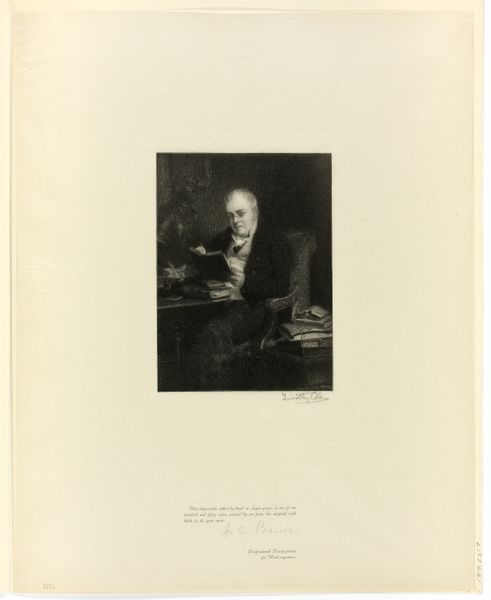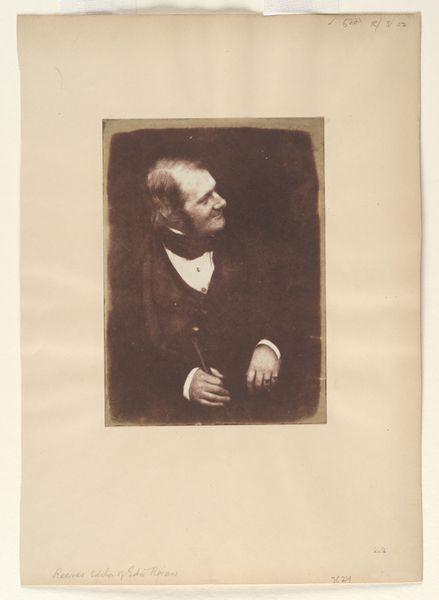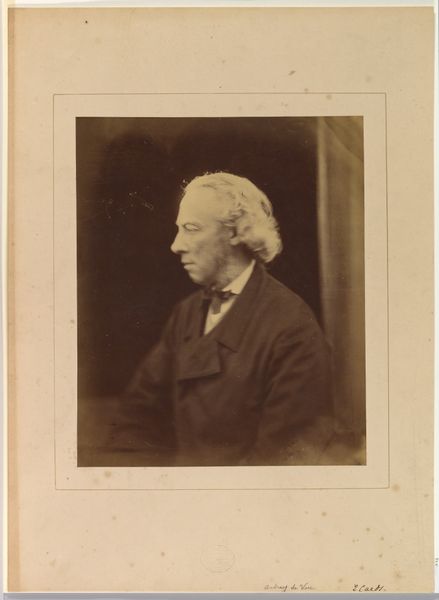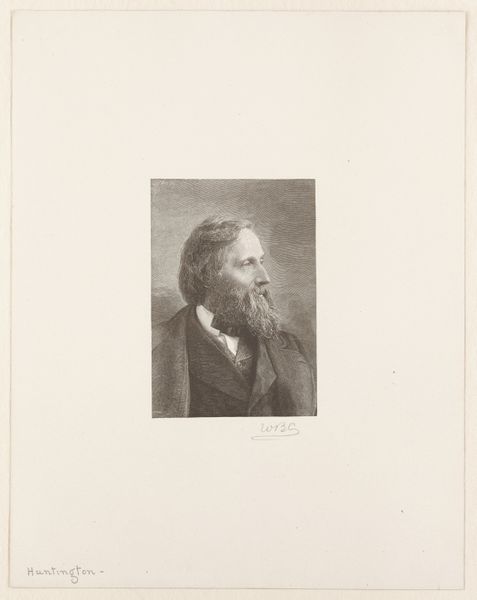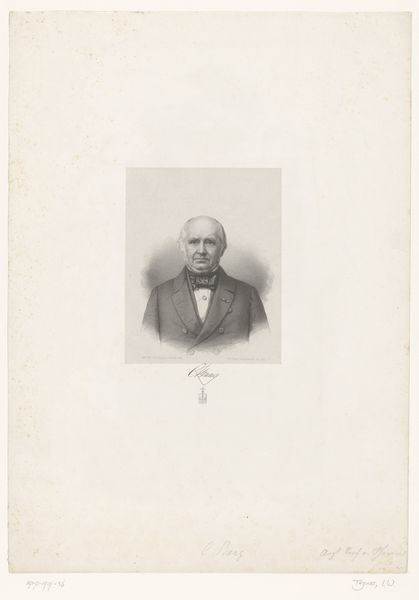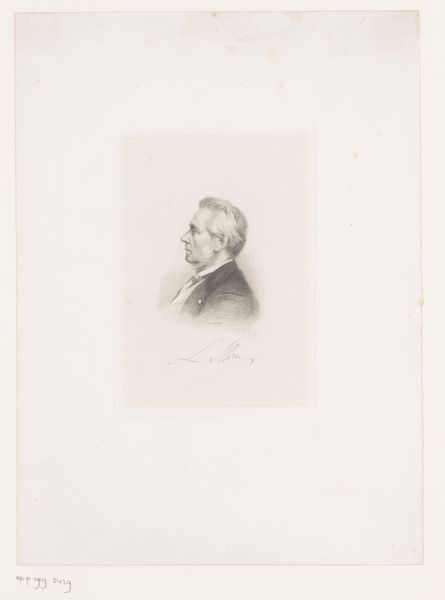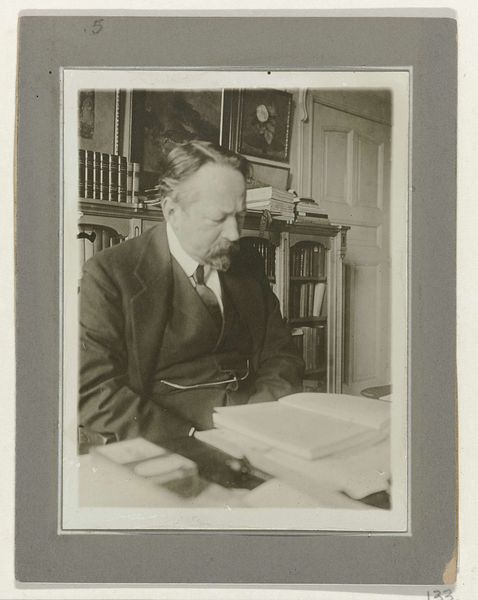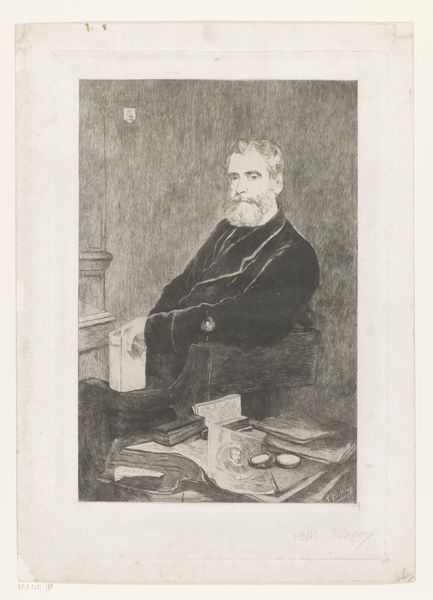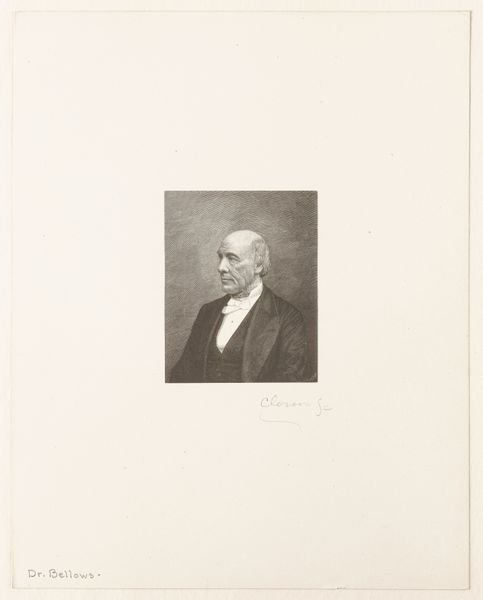
photography
#
portrait
#
photography
#
realism
Dimensions: height 310 mm, width 250 mm
Copyright: Rijks Museum: Open Domain
Curator: Let's discuss this photographic portrait titled "Portret van M.J. van Lennep," created sometime between 1900 and 1910. The photo captures a distinguished gentleman surrounded by personal effects. What’s your first impression? Editor: There's an air of faded grandeur, don’t you think? It's sepia-toned, casting everything in this kind of aged solemnity, this look almost demands respect, a very powerful person. Curator: Exactly, the photographic processes available at the time heavily influenced this aesthetic. The use of specific chemicals and printing methods gives the image this depth of tone and helps to determine its production date within that decade. Look closer at how he's positioned near the table with its laden papers and items. It speaks to a man engrossed in his work. How does this inform its impact for you? Editor: The table is intriguing. The books are obviously symbols of knowledge and perhaps status. The placement of these familiar framed pictures creates intimacy and makes me want to know who are those figures and what they mean to this man. They represent the layers of a man's history, presented symbolically within his personal space. Curator: Absolutely, and consider the labor involved. Early photography required patience not just from the subject but also from the photographer in the meticulous processes of development and printing. These weren't instant snapshots; they were carefully crafted representations. The clothes, of course, tells the rest of the story. The cut of the man's jacket speaks for a certain type of labour and class in the society. Editor: Yes, these images within the image offer a story within the larger one. The symbols and how it interplays with the gaze gives us something quite timeless that suggests both importance and personal life woven in together. There is also the idea of legacy too. Curator: Looking at it through this lens enriches the photo immeasurably and demonstrates the layers that materiality and labour provide when understanding portraits and the person. Editor: It certainly has. Reflecting on these symbolic visual cues really paints this fascinating portrait, don’t you agree?
Comments
No comments
Be the first to comment and join the conversation on the ultimate creative platform.
